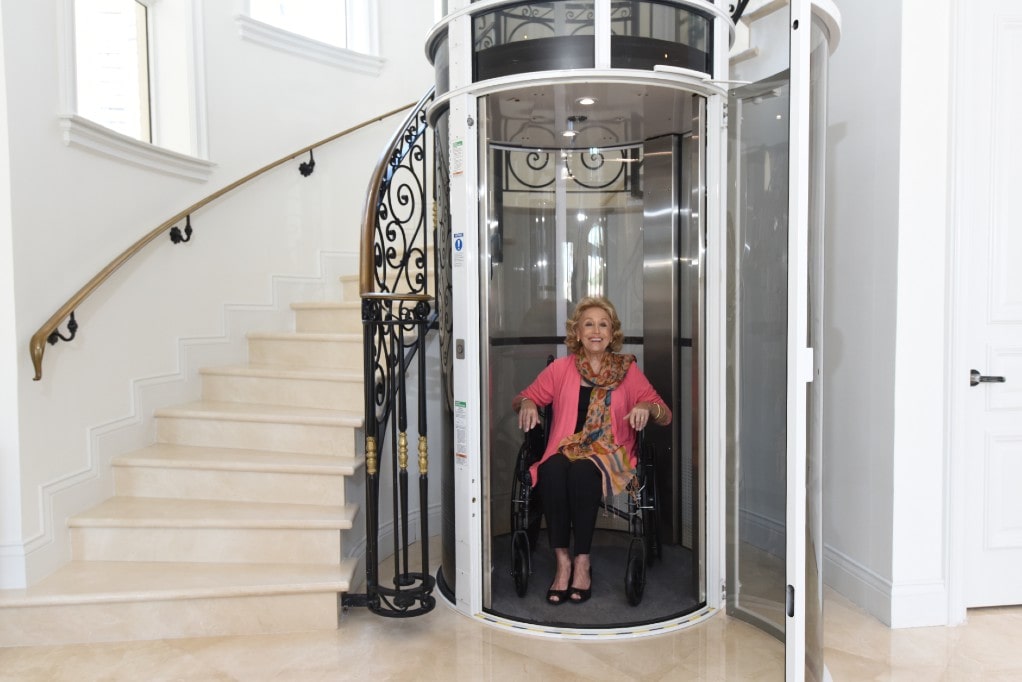London Lift Company: Trusted Professionals for All Your Vertical Transportation Requirements
London Lift Company: Trusted Professionals for All Your Vertical Transportation Requirements
Blog Article
Looking Into the World of Lifts: Usual Problems Dealt With by Various Lift Systems
As we navigate with the vertical transport systems of contemporary structures, lifts stand out as a vital component of our everyday lives. From hydraulic elevators to grip systems and machine-room-less layouts, each lift type comes with its collection of typical problems.
Hydraulic Elevators
Hydraulic elevators, usually favored for low-rise buildings, utilize fluid stress to control the movement of the lift car (lift repair companies). This mechanism entails a hydraulic pump pressing oil right into a cyndrical tube, creating the elevator to relocate the wanted direction. While hydraulic elevators are understood for their peaceful and smooth procedure, they do feature their very own set of usual concerns
One prevalent trouble with hydraulic lifts is oil leakage. The seals in the hydraulic system can break with time, resulting in oil seepage. This not just produces a mess however can likewise influence the lift's efficiency if left unaddressed. Additionally, issues with the control system, such as malfunctioning valves or a malfunctioning pump, can trigger disruptions in the lift's activity.
Normal maintenance and punctual repair services are essential to guarantee the smooth functioning of hydraulic elevators. By dealing with these typical issues proactively, structure proprietors can lessen downtime and guarantee the safety and security and performance of their vertical transportation system.
Grip Lifts
When considering vertical transportation systems in structures, one more typical type aside from hydraulic elevators is the grip elevator. Grip lifts run using a system of ropes and weights that move the elevator auto by gripping onto the hoist ropes. This device permits smoother and quicker upright transport contrasted to hydraulic systems.
One of the common problems dealt with by grip elevators is rope wear. The constant activity of the ropes within the traction system can cause damage over time, potentially causing the lift to malfunction or end up being risky for use. Normal examinations and upkeep of the ropes are important to guarantee the lift's appropriate performance and safety.
One more problem that traction lifts might come across is associated with the control system. Issues with the control system can result in problems such as unpredictable motion, hold-ups in action times, or even total closures. Routine testing and upkeep of the control system are vital to stop such problems and guarantee the elevator's reliability.
Machine-Room-Less (MRL) Elevators

One of the vital components of MRL lifts is the small gearless traction maker that is installed within the hoistway. This equipment successfully drives the elevator automobile without the requirement for bulky devices found in conventional grip lifts. In addition, MRL elevators commonly make use of a counterweight system to balance the cars and truck, additional boosting their power efficiency.
Despite their advantages, MRL elevators may face obstacles associated with upkeep and repair work due to the confined space for equipment installment. Access for servicing elements within the shaft can be restricted, requiring specialized training for service technicians. Proper upkeep routines and normal evaluations are essential to ensure the continued smooth operation of MRL elevators.
Overloading and Weight Restriction Issues
Straining and weight limit issues are vital concerns in elevator procedures. Elevator suppliers layout raises with certain weight capacities to make certain passenger safety and security and devices long life.
When elevators are overwhelmed, it puts excessive strain on the electric motor, cords, and various other parts, possibly triggering breakdowns or break downs. Safety and security devices such as sensors and overload sensors remain in area to stop elevators from moving if they identify excess weight. Additionally, exceeding weight limits can cause raised energy intake and wear and tear on the lift system.
To minimize overloading problems, building managers need to plainly display weight limitations in lifts and educate residents on the value of sticking to these limitations - lift repair companies. Regular maintenance checks by qualified technicians can likewise help make certain that elevators are running within risk-free weight parameters. By addressing overloading lift companies in London and weight limitation concerns proactively, building proprietors can enhance lift safety and security and performance
Electrical System Failures
Going beyond weight limits in elevators can not only lead to mechanical problems however additionally potentially add to electric system failings within the lift infrastructure. Electrical system failings are an important problem in elevator procedure, as they can trigger unanticipated closures, breakdowns, or also safety and security hazards.
Routine maintenance and evaluations are crucial to determine and address potential electric concerns immediately, guaranteeing the effective and secure procedure of elevator systems. By sticking to weight restrictions and performing routine electric system checks, structure proprietors can alleviate the threat of electric failures in lifts.
Conclusion

Hydraulic elevators, often preferred for low-rise structures, make use of fluid stress to manage the movement of the lift car.When thinking about vertical transportation systems in buildings, an additional common type apart from hydraulic lifts is the traction elevator. Grip lifts operate utilizing a system of ropes and weights that relocate the lift car by grasping onto the hoist ropes. Unlike conventional lifts that call for a separate equipment space to house the tools, MRL elevators incorporate many of the components within the shaft, getting rid of the requirement for a dedicated equipment room.In final thought, lifts encounter typical problems such as hydraulic breakdowns, traction system failings, and electric system problems.
Report this page